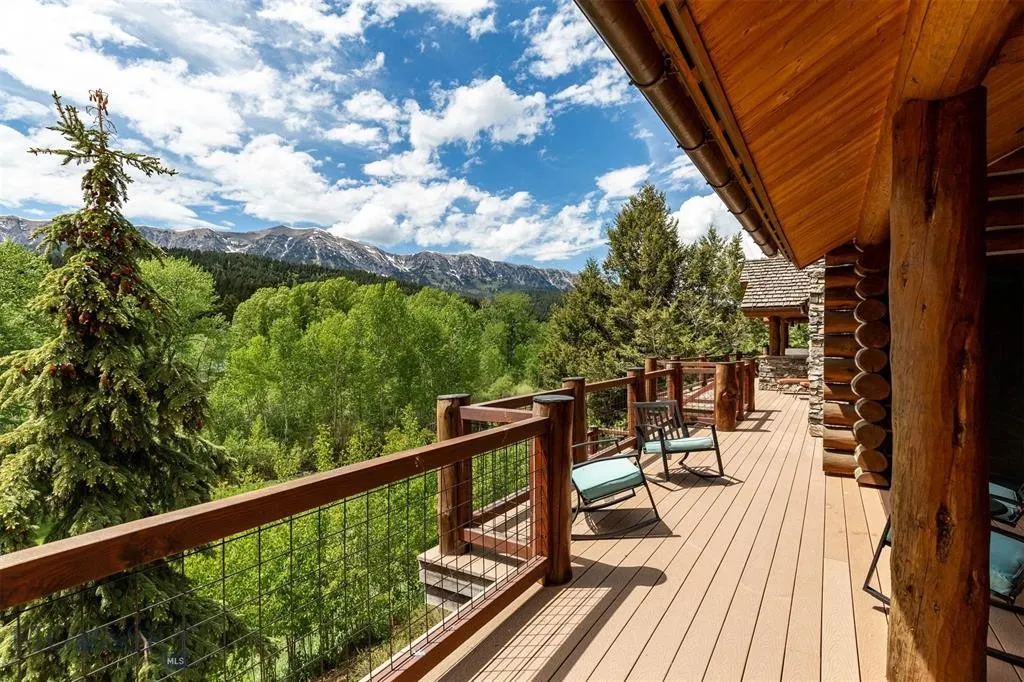The Restrictions You Buy Into
It’s a love/hate relationship: You and your perceived property rights juggled against your Home Owner Association (HOA) and CCRs. CCR stands for Covenants, Conditions, and Restrictions. By law, HOAs and CCRs exist for all land in Montana that is subdivided into 3 or more parcels of 160 acres or less. I am not a lawyer, but rather a real estate agent with PureWest Christie’s in Bozeman, Montana. Me and my partner, Mike Schlauch, and Associates Torrey Benson and Brett Evje, work with potential buyers daily and encounter many of the same questions and concerns regarding HOAs and CCRs. The first comment is generally along the lines of, “I am buying a house in Montana and I don’t want to be in a subdivision.” This is followed frequently with: “I don’t want someone telling me what I can do with my property.”
Here are a few facts and context to help you better understand Montana and subdivisions:
Montana was originally a Homestead State, settled by people who qualified for 160-acre land grants. Many times, settlers’ families acquired adjacent 160-acre tracts and large ranches and farms were formed. Today, over 64% of Montana is still ranch and farm land. Over the years, as property owners subdivided and sold off land, state law and local governments realized the necessity to have binding agreements and laws governing land use. Zoning restrictions govern areas of land, while CCRs are required as part of the platting process when subdividing land into 3 or more tracts under 160 acres. If land is divided into 5 or fewer tracts, it is considered a minor subdivision. 6 or more tracts is a major subdivision, and when you combine residential and mixed use, you have a Planned Unit Development. Therefore, a subdivision in Montana can be 3 properties of 20-plus acres. Even remote mountain cabins located off gravel roads and gated, luxury mini-ranches can be part of a subdivision.
Covenants are a basic governing document of common interest that contain limitations and restrictions on individual property owners for the good of all owners within the subdivision, and for the good of the local government and land use. If Robert Frost penned his famous quote “Good fences make good neighbors” today, he might have said, “Good covenants make good neighbors.”
Plat approval is often tied to certain provisions within the Covenants that cannot be repealed or amended without written consent of a governing body, which may be the city or county. For instance, one of Bozeman’s major subdivisions was only granted platting with Covenant provisions restricting individual property owners to a single well that pumps no more than 14 gallons of water a minute. This restriction will probably never be allowed to be amended.
There are numerous reasons that Covenants are essential for society to function. The most noteworthy include: to promote public health, to set a standard for all owners, to prevent overcrowding, protect open space, insure roads are maintained and connect to roads adjacent to the subdivision, to provide for adequate water, air, and sewage, to safeguard water drainage to prevent or minimize flooding, and to also protect the public from spending public funds for private property. Good Covenants help neighbors get along, protect property values, and provide the structure for the subdivision to be a functioning part of the local community. No Covenants and loose zoning can lead to a beautiful home suddenly finding a strip bar or pig farm setting up next door.
Before a county or city government allows land to be subdivided into 3 or more tracts less than 160 acres, the developer must present documents for preliminary plat approval. An entire process is in place to move from this beginning stage to final plat approval with the ability to sell tracts. CCRs and the formation of a HOA are an integral part of the process and are recorded by the city and county. They spell out vital information, such as how common, open land is owned and managed. Is open space deeded to the HOA? Is the HOA controlled by the developer until a certain percentage of tracts are sold and then handed over to an HOA?
HOAs include Articles of Incorporation, filed with the State, By-Laws, CCRs, and Rules and Regulations. In Montana, every owner in a subdivision has a mandatory membership in the HOA and is governed by the By-Laws and CCRs. This is legally binding and governed by rules and regulations. Dues and assessments made by the HOA are mandatory and liens can be placed on property if the dues are not paid. Covenants are enforceable and restraining orders and injunctions can be brought against homeowners who fail to comply with the CCRs. Prior to purchasing a property, a buyer should obtain copies of Article of Incorporation, By-Laws, CCRs, and Rules and Regulations. Buyers should know the current HOA dues, what is included in these dues, and any future assessments under consideration. Buyers should ask for HOA financial statements to determine potential risks of future assessments and the HOA’s financial stability. It is wise to obtain copies of HOA meetings, along with talking to the current HOA President. Each HOA operates within its own culture and By-Laws. As a buyer, you want to understand your potential liability, the CCR restrictions, and what is required to amend or change the CCRs.
Questions we are frequently asked about CCRs include whether you can rent or lease your home, any landscaping restrictions including setbacks and fencing, restrictions on pets and farm animals, if you can park on the street or have a trailer or RV in your driveway, and design rules. The Design Review Committee tends to be the biggest hurdle with CCRs. Their guidelines begin with zoning restrictions and then encompass all the rules the owners feel are required to insure their neighborhood conforms to their ideal standards. This can include minimum or maximum house square footages, exterior materials, paint colors, architectural styles, landscaping, and whether you can have a second freestanding building as a guest house or shop. These rules are not taken lightly, and even if you are purchasing land to build a mountain home retreat, if it is within an HOA, you may find that you must use logs and timbers for your exterior.
CCRs can expire, be turned over from the developer to the HOA, or amended over the years due to provisions becoming obsolete, city and county zoning changes, or just to get more in line with the living experiences of owners. They are not standard forms without negotiable terms unless the terms are tied by the local government into the granting of the subdivision platting. However, there are rules governing the amendment of Covenants, and once again a buyer needs to understand that just because they want CCRs amended it won’t necessarily happen. It is important to know the By-Laws of an HOA to understand how board members are elected and their terms, how assessments are determined, and what changes can be instituted by the board without a vote. Do changes require a majority vote or a unanimous vote? It is worthwhile to conduct due diligence about an HOA and get a feel for the culture. Is the HOA reasonable and friendly or do they have a history of squabbling with owners and adjacent subdivisions? Are there any past, present, or potentially future lawsuits? How often have the Covenants been amended and are the amendments legal and recorded?
We always encourage a buyer to understand the CCRs prior to purchasing a property, and, if there are any questions, to consult with a lawyer. During the Due Diligence phase of purchasing a property, obtain all documents. Ask questions, research, and understand what you are buying. Generally, Title Insurance and a deed will simply make reference to the CCRs and easements and leave it up to the buyer to obtain copies and know the documents. Title Companies and real estate agents will supply copies of the CCRs. At SU Platinum Properties, we usually include links on our web site to the CCRs for properties we have listed and happily supply the HOA contact information. The Montana Supreme Court has decided many court cases challenging CCRs by individual owners and generally the CCRs are upheld. It is your duty to understand the HOA and CCRs and to have determined that you are willing to live within the terms. Realtors should be willing to supply the data, as well as encouraging you to seek legal advice as needed.






















